USEFUL ADVICE: Brake fluid is very hygroscopic and absorbs moisture from the air, which, in addition to corroding parts of the brake system, lowers the boiling point of the fluid itself, and this can lead to brake failure during frequent heavy braking. Therefore, we recommend changing the brake fluid every year (spring).
You will need: key «at 17», wrenches for pipeline nuts «at 9», «at 11», brake fluid, rubber or transparent hose, transparent container.
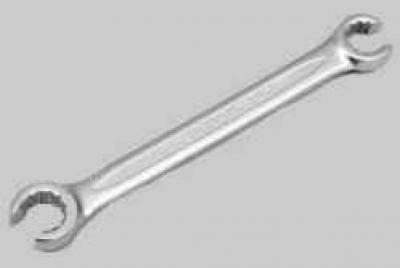
NOTE: This is what the special pipe nut wrench looks like.
USEFUL ADVICE: It is recommended to replace the brake fluid with an assistant, having previously installed the car on an inspection ditch or overpass (no need to remove wheels).
GOOD ADVICE: Use DOT-4 class brake fluids.
USEFUL ADVICE: The sequence of fluid replacement in brake mechanisms:
- rear right;
- front left;
- rear left;
- front right.
WARNING: Do not reuse the drained fluid: it is contaminated, saturated with air and moisture. Always add only new fluid of the brand that was previously filled into the system.
WARNING: Brake fluid is hygroscopic (absorbs moisture from the surrounding air), so it can not be stored in an open container.
WARNING: Protect nature! Do not pour used brake fluid into the soil or sewer system. Contact your local authorities for the location of waste fluid collection points in your area.
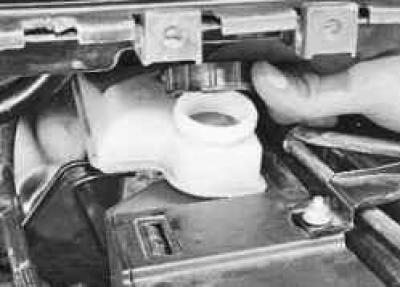
1. Turn away a stopper of a tank of the main brake cylinder.
2. Add clean brake fluid to the reservoir up to the lower edge of the filler neck.
WARNING: Park the vehicle and place wheel chocks under the rear wheels («shoes»).
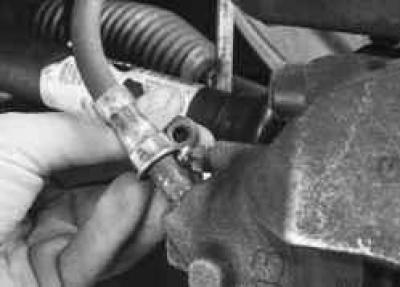
3. Clean the air release valves from dirt and remove the protective caps of the valves of the working cylinders of the brake mechanisms of the front..
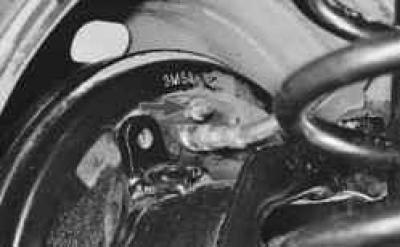
4.... and rear wheels.
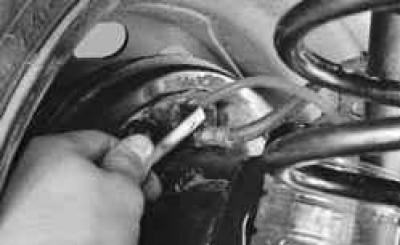
5. Attach the rubber hose to the right rear wheel brake slave cylinder bleed valve and immerse the end of the hose in a clean, transparent container.
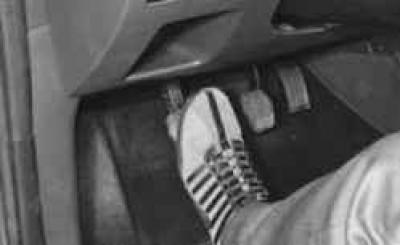
6. The assistant should sharply depress the brake pedal four to five times (with an interval between pressing 1–2 s), and then keep the pedal depressed.
7. Loosen the air release valve 1/2 to 3/4 turn. The old one will start to flow out of the hose (dirty) brake fluid. The brake pedal at this time should smoothly reach the stop. As soon as the fluid stops flowing, close the air release valve.
NOTE: Constantly monitor the liquid level in the tank, not allowing it to drop to the mark «MIN» on the wall of the tank. Top up with new brake fluid as needed to prevent air from entering the hydraulic drive. This ensures that the old liquid is gradually replaced by the new one without draining the hydraulic system.
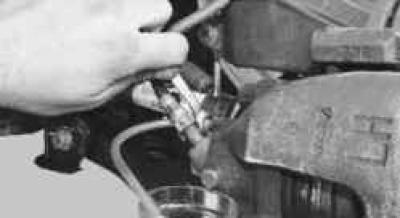
8. In the same way, replace the brake fluid in the working cylinder of the brake mechanism of the left front wheel.
9. Then change the brake fluid in the second circuit (first in the working cylinder of the brake mechanism of the left rear wheel, then the right front).
10. Repeat steps 5-9 until the fluid in the drive is completely replaced (clear fluid without air bubbles should flow from the hose).
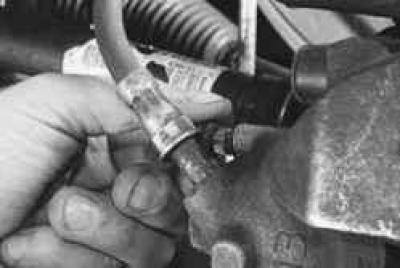
11. After changing the brake fluid, be sure to put on protective caps on the air release valves. Replace damaged caps.
12. Check the quality of the work done: press the brake pedal several times - the pedal stroke and the force on it should be the same each time you press it. If not, go back to steps 5-9.
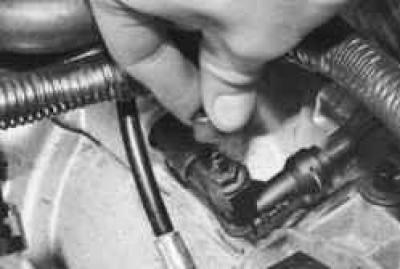
13. To replace the brake fluid in the clutch release hydraulic drive, remove the protective cap from the valve to remove air from the working cylinder.
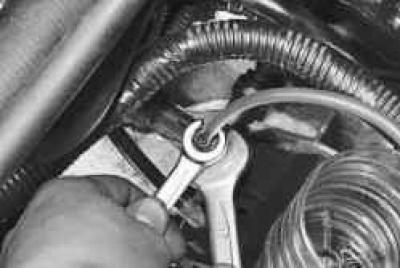
14. Put a hose on the valve and lower its end into a container with a small amount of brake fluid. Ask an assistant to press the clutch pedal 4-5 times at intervals of 2-3 seconds, and then keep it pressed. Unscrew the fitting 3/4 turn while holding the slave cylinder with the second wrench. The old one will come out of the hose into the container (dirty) brake fluid.
15. Wrap the valve and ask the assistant to release the clutch pedal.
16. Repeat operations 14 and 15 until the complete replacement of the fluid in the hydraulic clutch release (clear fluid without air bubbles should flow from the hose).
WARNING: While bleeding the hydraulic drive, periodically check the fluid level in the reservoir of the master brake cylinder, common to the hydraulic brake and clutch release drives. Do not allow the liquid level in it to fall below the mark «MIN». Top up fluid in a timely manner, otherwise air will enter the system and it will have to be pumped.
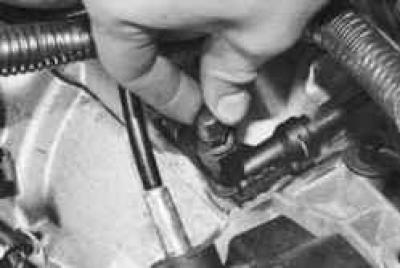
17. Close the valve, put on the protective cap.
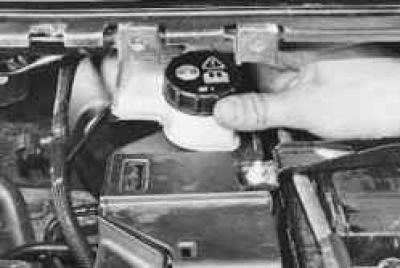
18. Add brake fluid to the level between the marks «MIN» And «MAX» on the wall of the tank and screw on the cap.
19. Install the parts in the reverse order of removal.
Visitor comments